Author: Andy Carter
While hops are an integral part of every beer recipe, many have taken a special interest in this aromatic flower, as it is the main feature in the various types of modern IPA. The ability to produce a consistent product is important for all brewers, particularly those who brew commercially, as it ensures consumers get what they expect. Unfortunately, hops are known to experience varying degrees of change year over year, and until recently, this was just something brewers were forced to deal with.
There’s no way to fully control the impact annual growing conditions are going to have on specific hop varieties, but Haas aims to reduce those differences with LUPOMAX, a proprietary hop product with a higher concentration of lupulin that’s said to improve overall consistency between batches. This is incredibly important for commercial brewers who want to ensure customers get what they’re expecting, though even on the homebrew scale, consistency is an undeniably good thing.
Considering how new this product is, the folks from Yakima Valley Hops asked if we might put the consistency claims to the test by comparing beers made with same LUPOMAX hop variety that were harvest in either 2019 or 2020. As a fan of Mosaic, that’s the variety I settled on for this xBmt.
| PURPOSE |
To evaluate the differences between New England IPAs hop entirely with Mosaic LUPOMAX from either the 2019 or 2020 crop year.
| METHODS |
For this xBmt, I designed a single hop New England IPA recipe.
Loop-the-Lupo
Recipe Details
| Batch Size | Boil Time | IBU | SRM | Est. OG | Est. FG | ABV |
|---|---|---|---|---|---|---|
| 6.5 gal | 60 min | 43.9 | 3.6 SRM | 1.061 | 1.007 | 7.09 % |
| Actuals | 1.061 | 1.007 | 7.09 % | |||
Fermentables
| Name | Amount | % |
|---|---|---|
| Pilsen Malt | 11 lbs | 78.57 |
| Oats, Flaked | 3 lbs | 21.43 |
Hops
| Name | Amount | Time | Use | Form | Alpha % |
|---|---|---|---|---|---|
| 2019 OR 2020 Mosaic LUPOMAX | 6 g | 60 min | Boil | Pellet | 17.8 |
| 2019 OR 2020 Mosaic LUPOMAX | 43 g | 15 min | Boil | Pellet | 17.8 |
| 2019 OR 2020 Mosaic LUPOMAX | 71 g | 0 min | Aroma | Pellet | 17.8 |
| 2019 OR 2020 Mosaic LUPOMAX | 85 g | 8 days | Dry Hop | Pellet | 17.8 |
Yeast
| Name | Lab | Attenuation | Temperature |
|---|---|---|---|
| Juice (A38) | Imperial Yeast | 76% | 32°F - 32°F |
Notes
| Water Profile: Ca 92 | Mg 5 | Na 0 | SO4 35 | Cl 152 |
Download
| Download this recipe's BeerXML file |
I started my brew day by adding identical volumes of RO water to separate BrewZilla units then setting the controller to heat it up.
After adjusting both sets of water to the same mineral profile, I weighed out and milled the grains.
Once the water for each batch was adequately heated, I incorporated the grains then checked to make sure both were at the same target mash temperature.
While the mashes were resting, I prepared the kettle hop additions. Given the relatively small difference in AA% between the hops along with the fact most of the kettle additions were made later in the boil, both batches received the same amount of hops.
Once each 60 minute mash was complete, I performed a simple batch sparged, collecting the wort in another kettle before adding more hops. Following a 15 minute hop stand, the worts were chilled during transfer to sanitized fermentation vessels.
Refractometer readings showed both worts achieved the same target OG
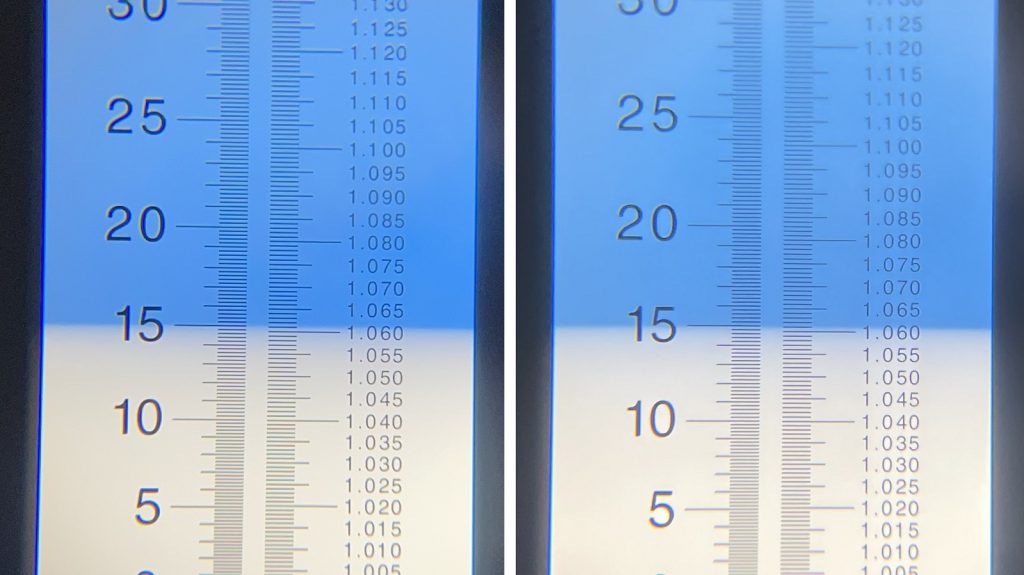
After placing the filled carboys in my chamber to finish chilling, I used DME to make a vitality starter that was pitched with two pouches of Imperial Yeast A38 Juice.
Both worts were at my desired fermentation temperature of 66°F/19°C 5 hours later, so I split the starter equally between them. With fermentation active in both batches 24 hours later, I added the dry hops.
After a week, I raised the temperature in the chamber to 70°F/21°C and let it another 3 days before taking hydrometer measurements showing both reached the same FG.
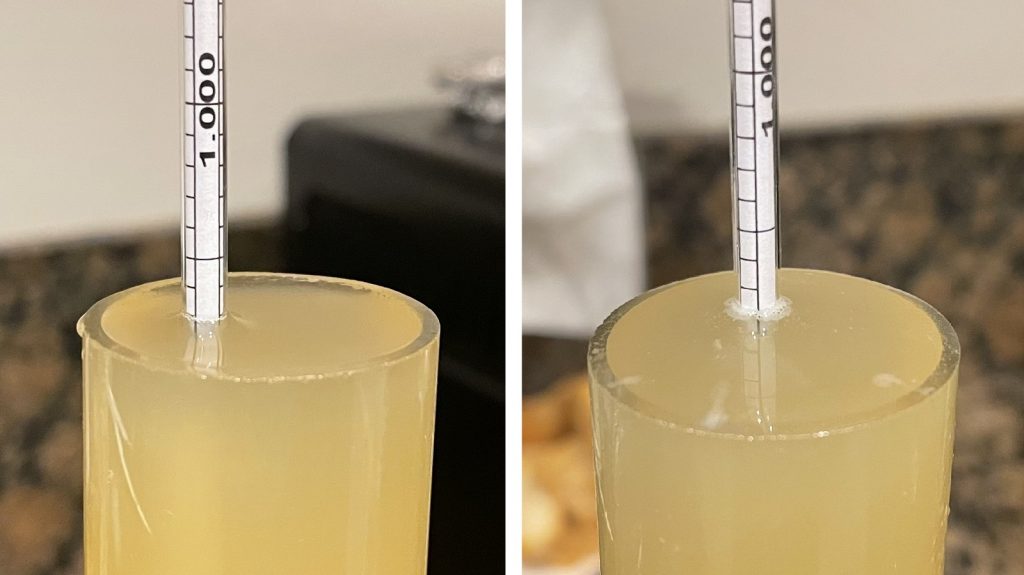
At this point, I racked the beers to sanitized kegs.
The filled kegs were placed in my keezer and left on gas for a week before carbonated and ready for evaluation.
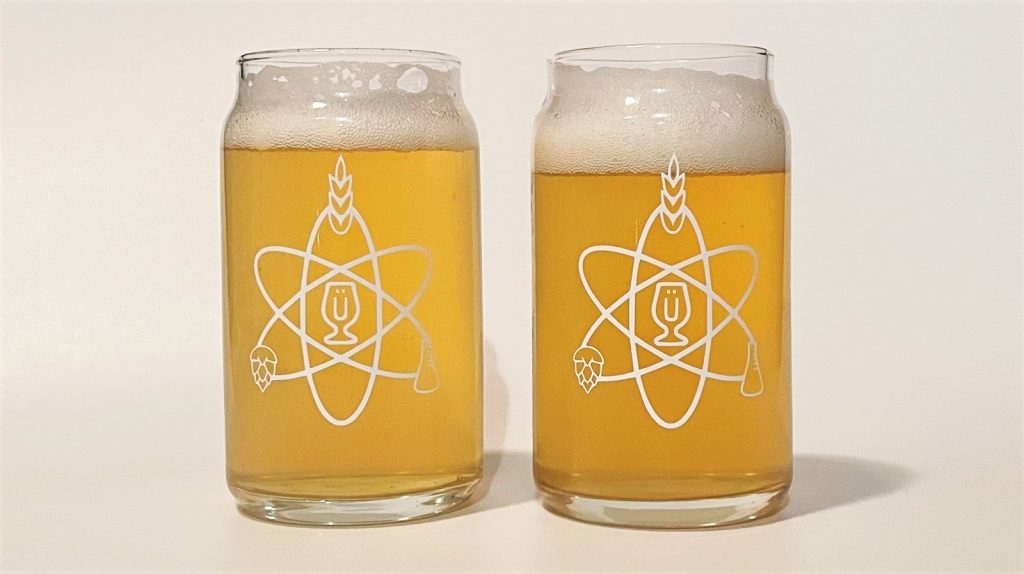
| RESULTS |
Data for this xBmt was collected during the 2021 Southern California Homebrewers Festival, which was adapted to fit within our local Covid-19 protocol.
A total of 21 people of varying levels of experience participated in this xBmt. Each participant was served 2 samples of the beer made with 2019 Mosaic LUPOMAX and 1 sample of the beer made with 2020 Mosaic LUPOMAX in different colored opaque cups then asked to identify the unique sample. While 12 tasters (p<0.05) would have had to accurately identify the unique sample in order to reach statistical significance, only 9 did (p=0.24), indicating participants in this xBmt were unable to reliably distinguish an American IPA made with 2019 Mosaic LUPOMAX from one made with 2020 Mosaic LUPOMAX.
My Impressions: I attempted 5 semi-blind triangle tests, out of which I identified the odd-beer-out just 3 times. To my palate, these beers both had big stone fruit, tropical fruit, and melon characteristics with subtle spicy and dank notes in the finish.
| DISCUSSION |
In any business, it’s important to provide consumers with what they expect, and that’s certainly the case when it comes to beer. Historically, brewers have had to adapt their recipes to account for unavoidable differences in hops caused simply by the year in which they were grown. Sometimes those differences are minimal, but other times they’re vast enough to have a noticeable impact. The fact tasters were unable to reliably distinguish NEIPAs made with Mosaic LUPOMAX from either the 2019 or 2020 crop years suggests any differences were generally imperceptible.
These results throw some support behind the claim that LUPOMAX improves consistency of hop character between crop years, at least for Mosaic, which translates into brewers being able to produce a more consistent product. It should be noted that both sets of hops used in this xBmt were stored cold in nitrogen purged vacuum sealed bags up until the point of use, minimizing any deterioration that might be caused by environmental factors.
I’ve had the opportunity to use a few varieties of LUPOMAX and have been impressed with the level of hop character they contribute to beer, even when using less than I would with standard pellets. I look forward to future hop crop year comparisons with a wider time gap, though the fact neither blind tasters nor I could tell apart the beers in this xBmt leaves me feeling pretty confident in the consistency of LUPOMAX.
If you have any thoughts about this xBmt, please do not hesitate to share in the comments section below!
Support Brülosophy In Style!
All designs are available in various colors and sizes on Amazon!
Follow Brülosophy on:
FACEBOOK | TWITTER | INSTAGRAM
If you enjoy this stuff and feel compelled to support Brulosophy.com, please check out the Support page for details on how you can very easily do so. Thanks!


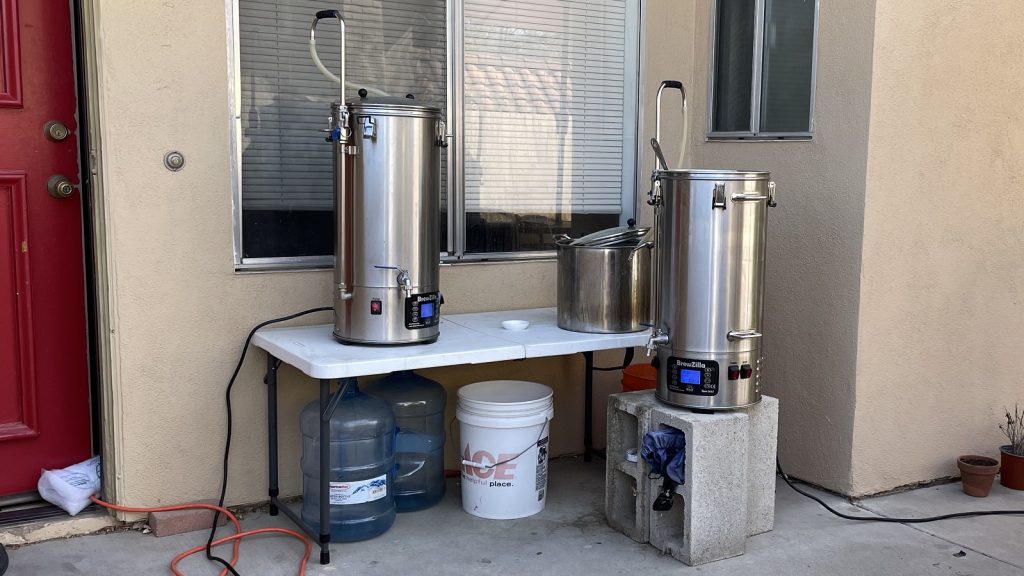
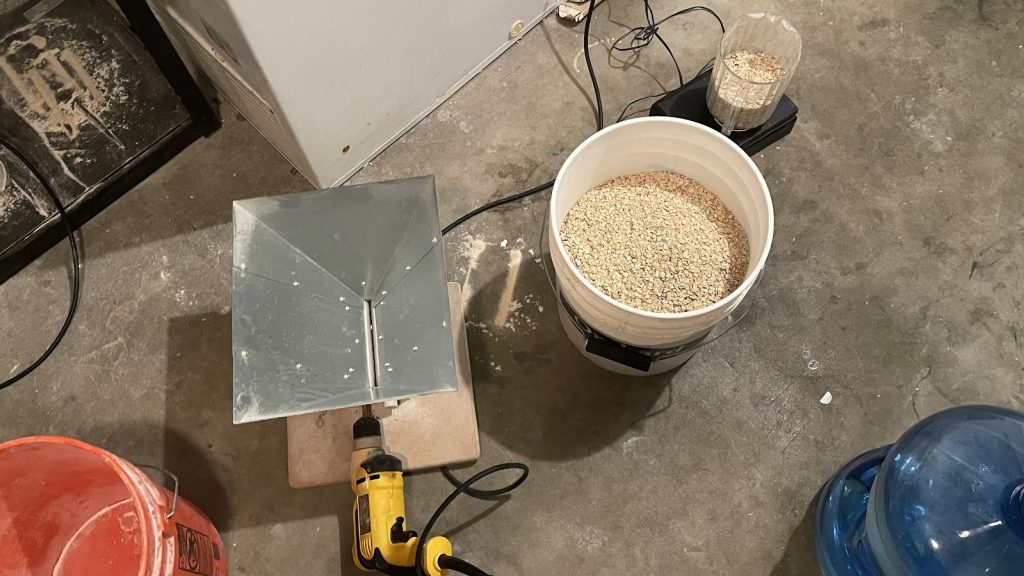
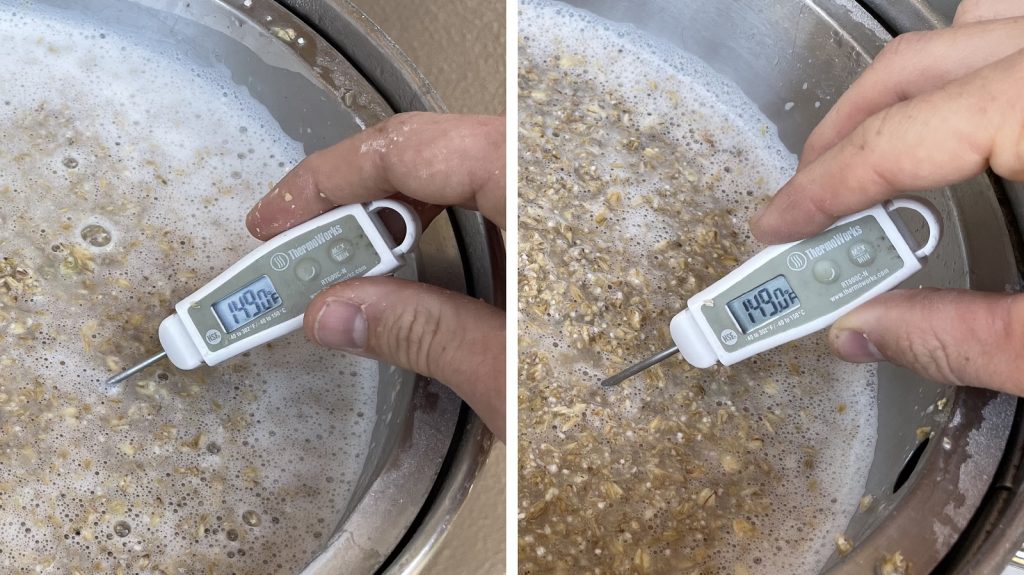
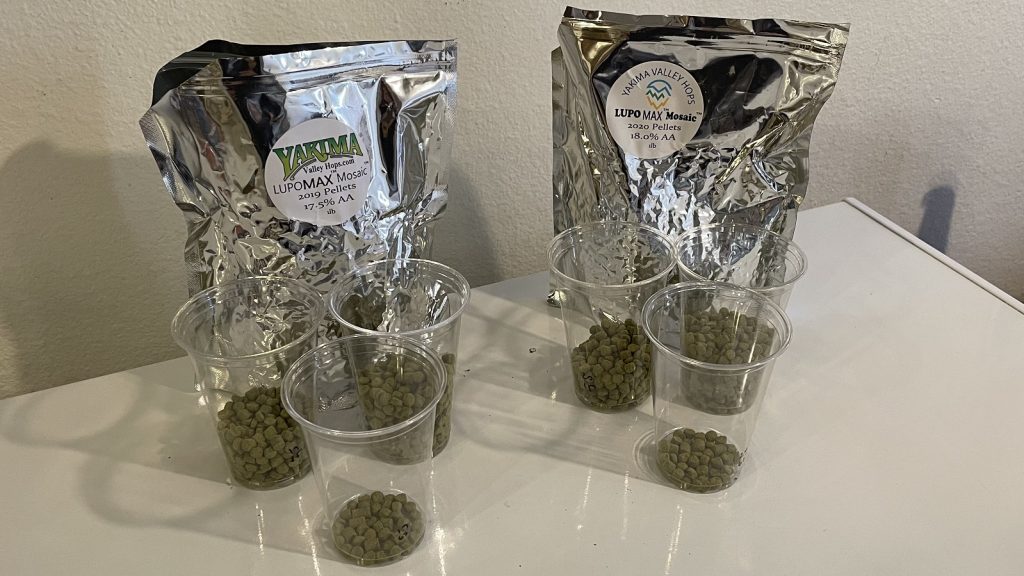
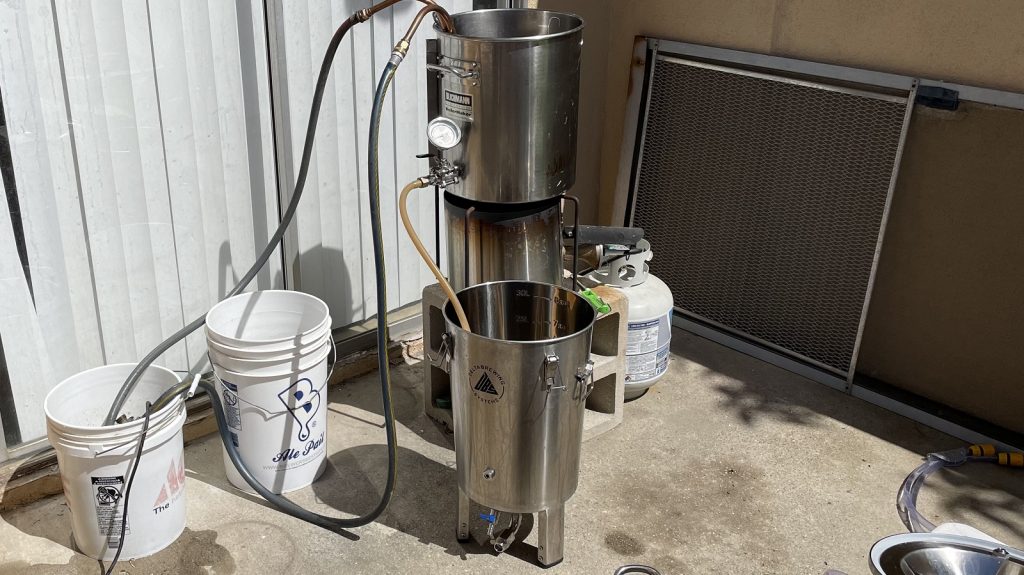
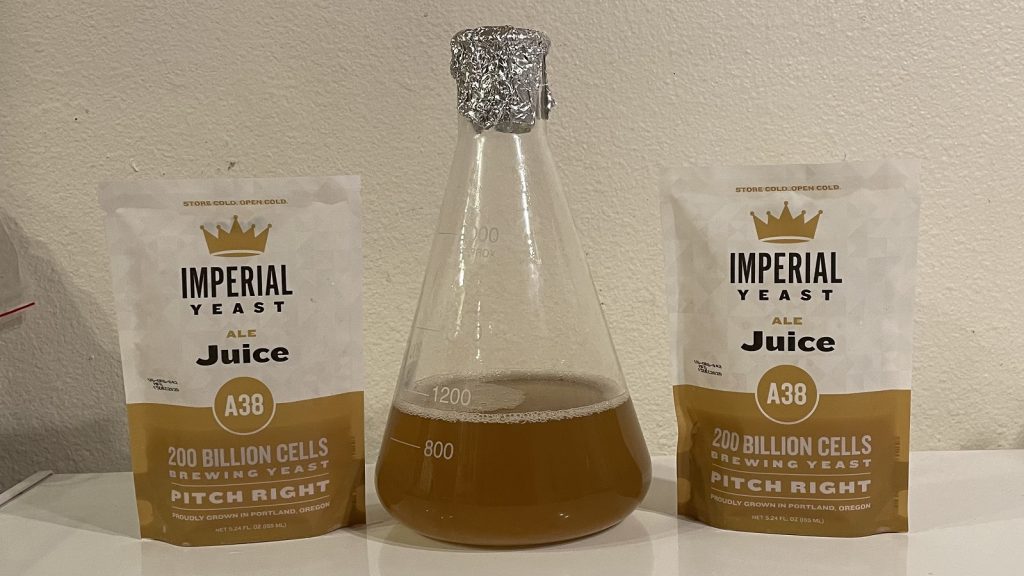
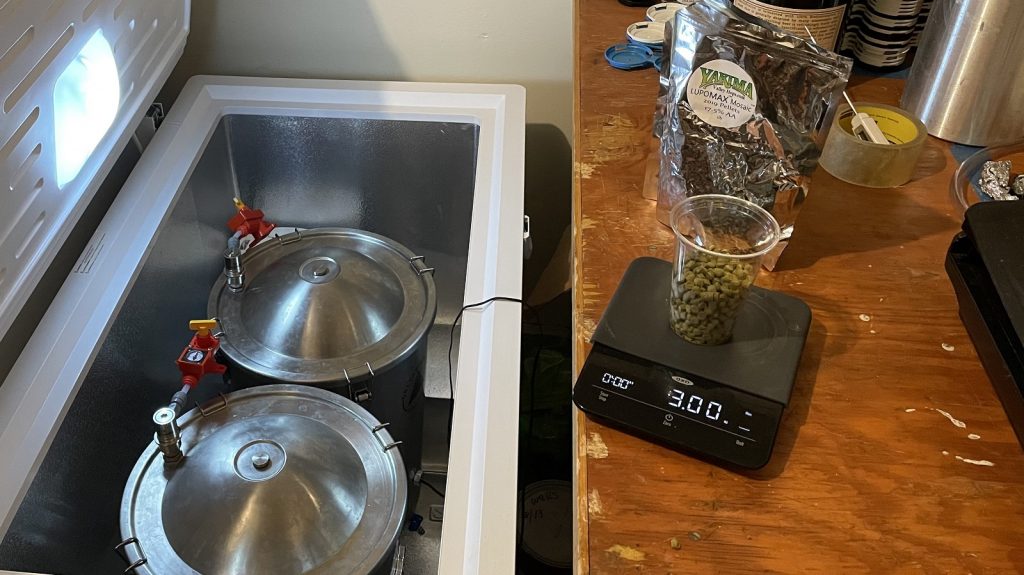
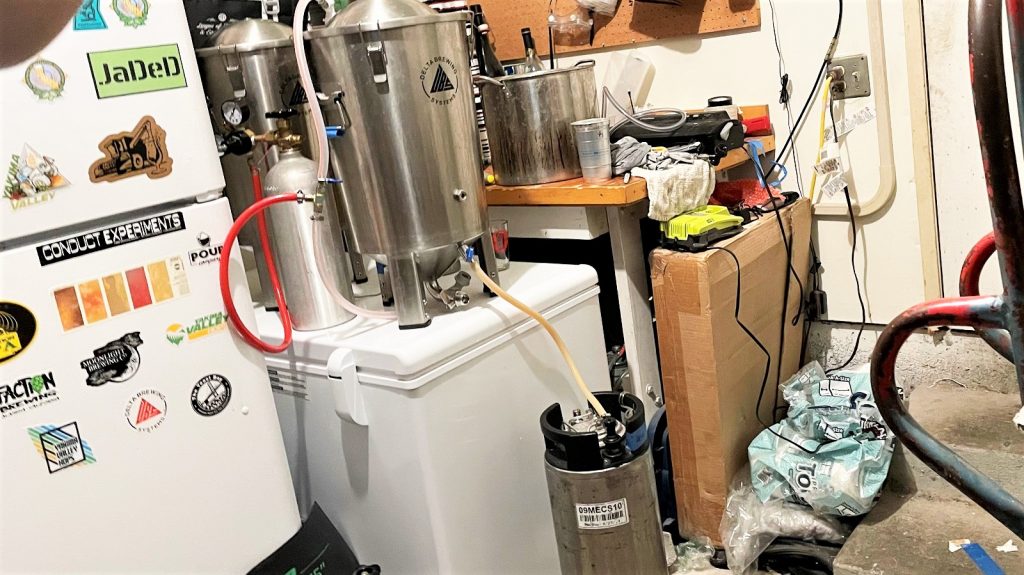












2 thoughts on “exBEERiment | Hop Crop Year: 2019 vs. 2020 Mosaic LUPOMAX”
Why not try the same experiment with regular Mosaic. Bet you will still not be able to tell the difference.
Andy, Do you ferment under pressure from the start? Whats you spunding process?